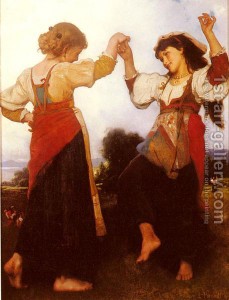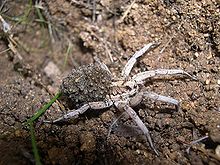The Tarantella: Dance, Music, and Legend
Posted on October 13th, 2013 by Anna in Uncategorized | No Comments »
The Tarantella is a traditional folk dance from the southern areas of Italy with a very distinctive, energetic sound. Typically played with a mandolin, guitar, accordion, and tambourine, the Tarantella varies from region to region but always maintains a vibrant, fast-paced melody. The tempo is normally in 6/8 time, with dancers taking triple steps, alternatively drawing together and moving apart from each other. The tune of the Tarantella Neapoletana is the most easily recognizable, if only because of its presence in The Godfather movies and pasta commercials, but there are many different versions from Calabria, Sicily, and other small, rural areas.
As legend has it, the Tarantella is a throwback to Bacchanalian rites of the pagan days from the Roman Empire. The Cult of Dionysus involved wild dance sessions as a method of worship, all of which was driven underground when Rome was converted to Christianity. Its first historical mention can be traced back to 1374, when allegedly a gang of youths went to a churchyard to perform the lively St. Vitus’ Dance. Disturbed and angered by such merriment, the parish priest prayed for God to punish the youths by making them dance frenziedly for an entire year. The Tarantella later reemerged in areas around Abruzzo, Puglia, and Calabria in the 16th and 17th century as a remedy to the poisonous bite of a local wolf spider, the Mediterranean Black Widow. The spider, known in Italian as the tarantula, was most active during the late summer harvest times, and its bite was thought to induce “tarantism,” a manic hysteria and restlessness that allegedly led to death.
The Tarantella has gone through many incarnations since then, becoming a graceful, stately courtship dance between a couple and a therapeutic cure for neurotic women, but for centuries its primary purpose was in response to spider bites. The bite victims, known as the tarantolati, were meant to dance frenziedly by themselves for hours or even days to sweat out the venom, a cure which was more psychosomatic than anything. Still, the music has become iconic of southern Italy, and its many variations have served as inspiration for composers all across Europe. Chopin, Liszt, Rossini, Debussy, Mendelssohn, and Rachmaninoff all have used variations of the tarantella in their work.
In contemporary times, the Tarantella has become more of a group dance, performed in a circle at occasions like weddings or birthday parties. Guests will dance clockwise in a circle, speeding up as the tempo increases, switching directions and trying to see who can keep up pace with the musicians. Young musicians and groups in Italy, drawing on the old traditions, have fueled a movement called “Neo-Tarantism,” which recreates the frenzy and hypnotic effect of the Tarantella but generally with a faster tempo and different, more modern sound. There is also a considerable amount of research being done in the effects of the Tarantella—both the music and the dance—on people with psychiatric problems such as depression and hysteria. While it resembles similar dances in the Mediterranean area, such as the Furlana of Venice and the Saltarello of Rome, the Tarantella is the one dance that is most widely known and can be considered truly iconic of Italian culture.






